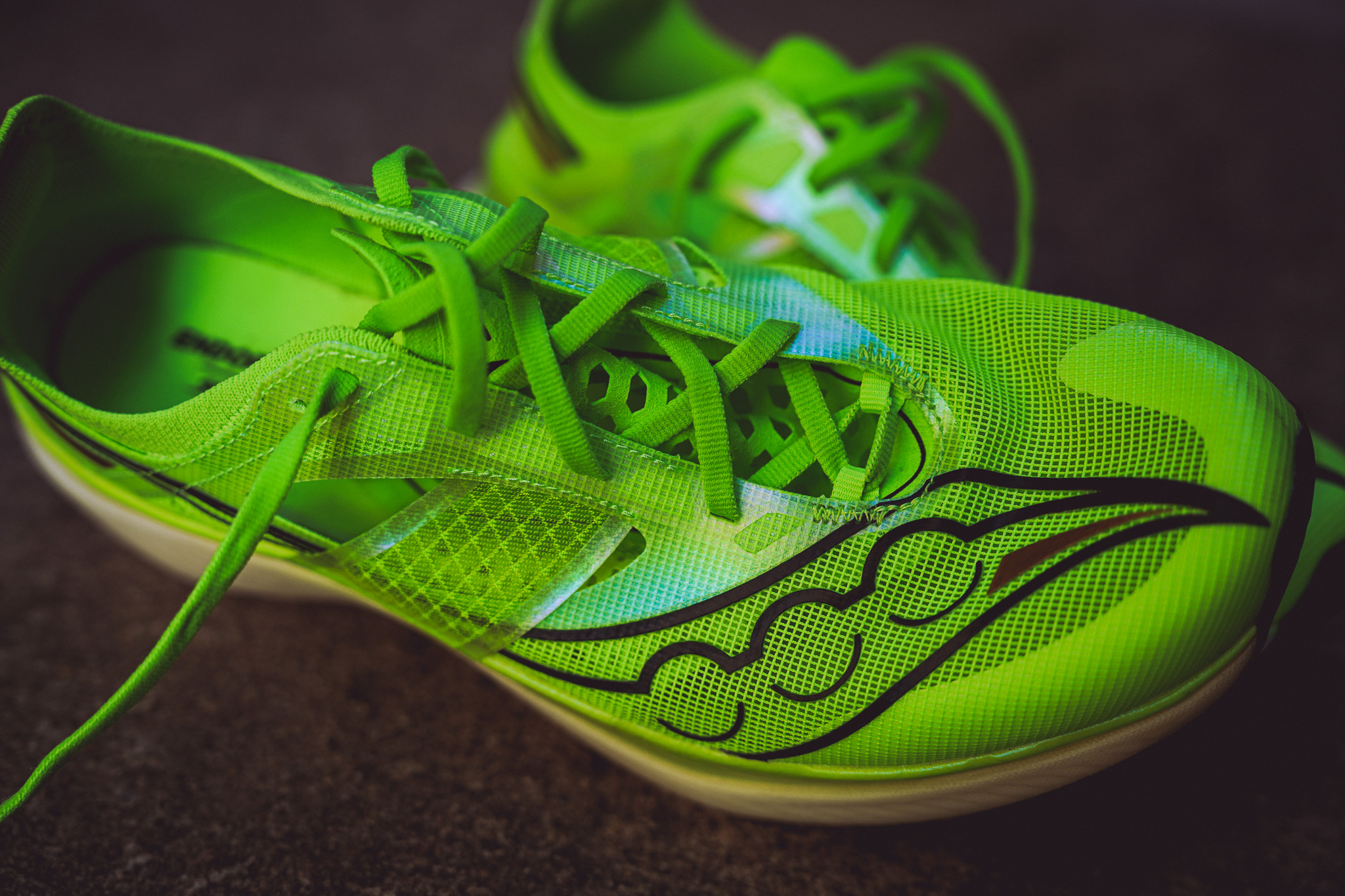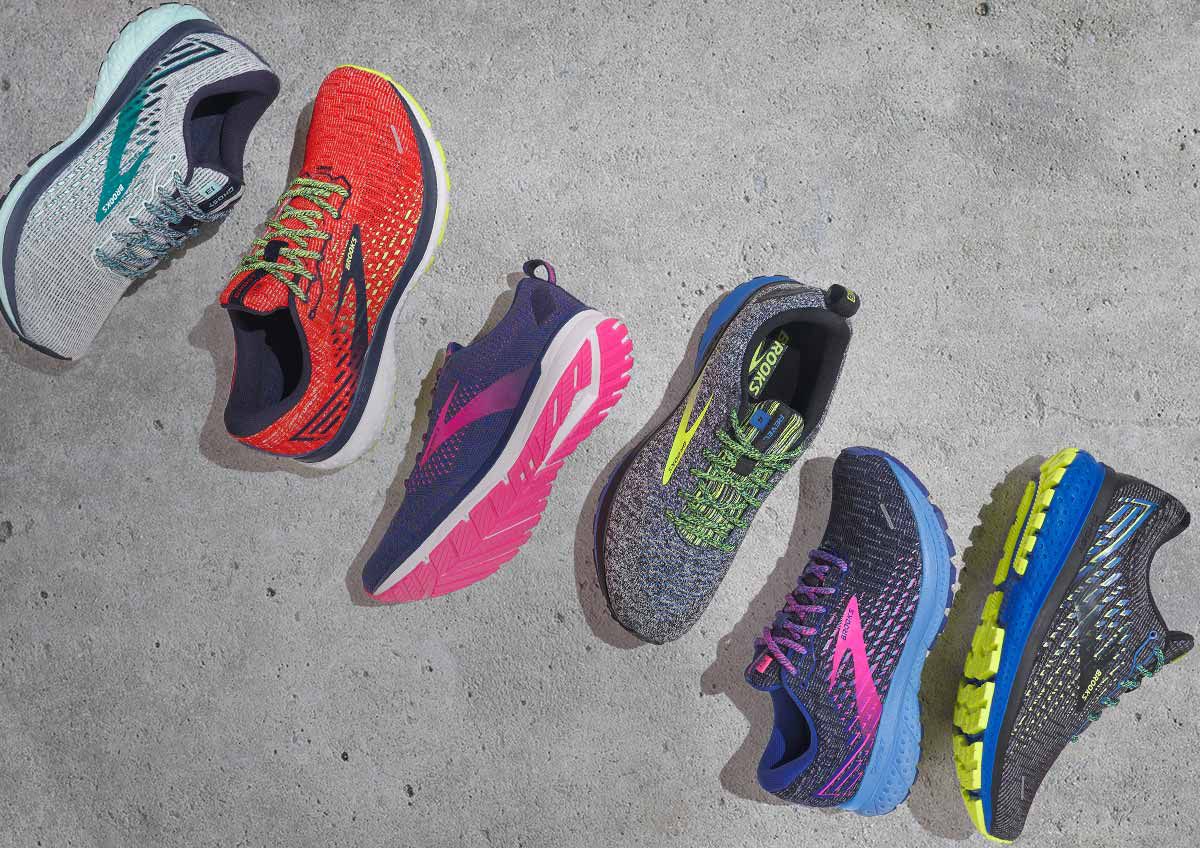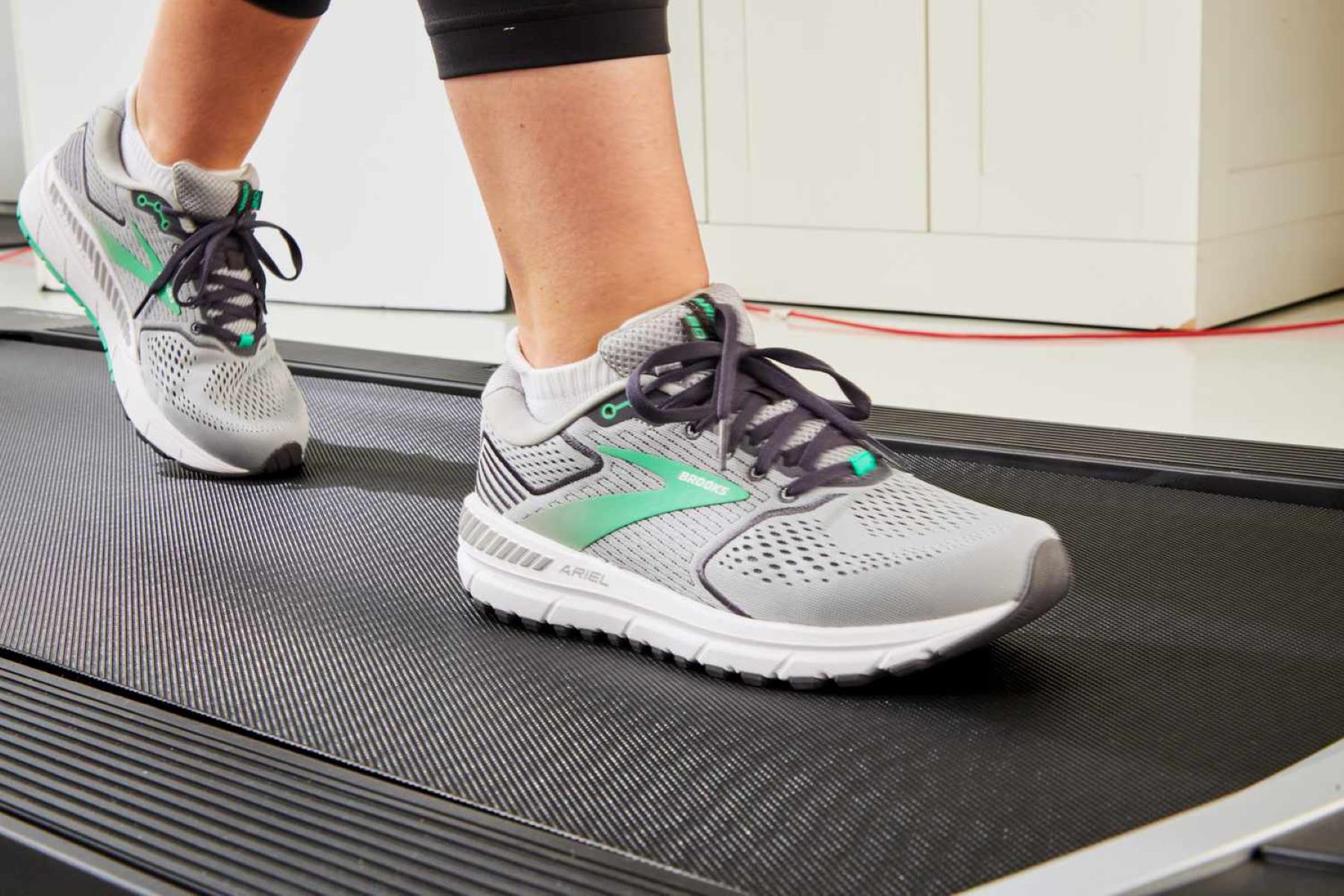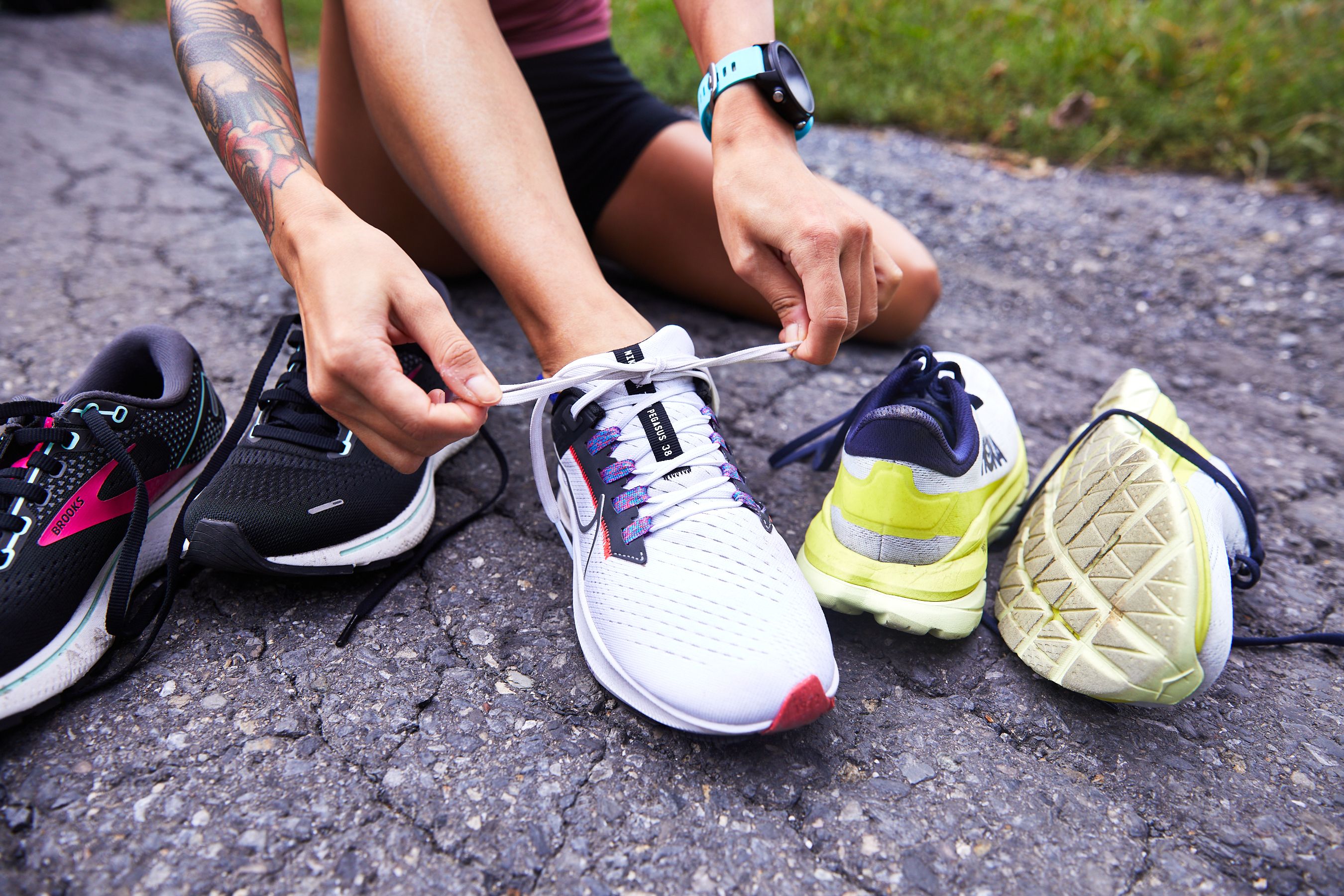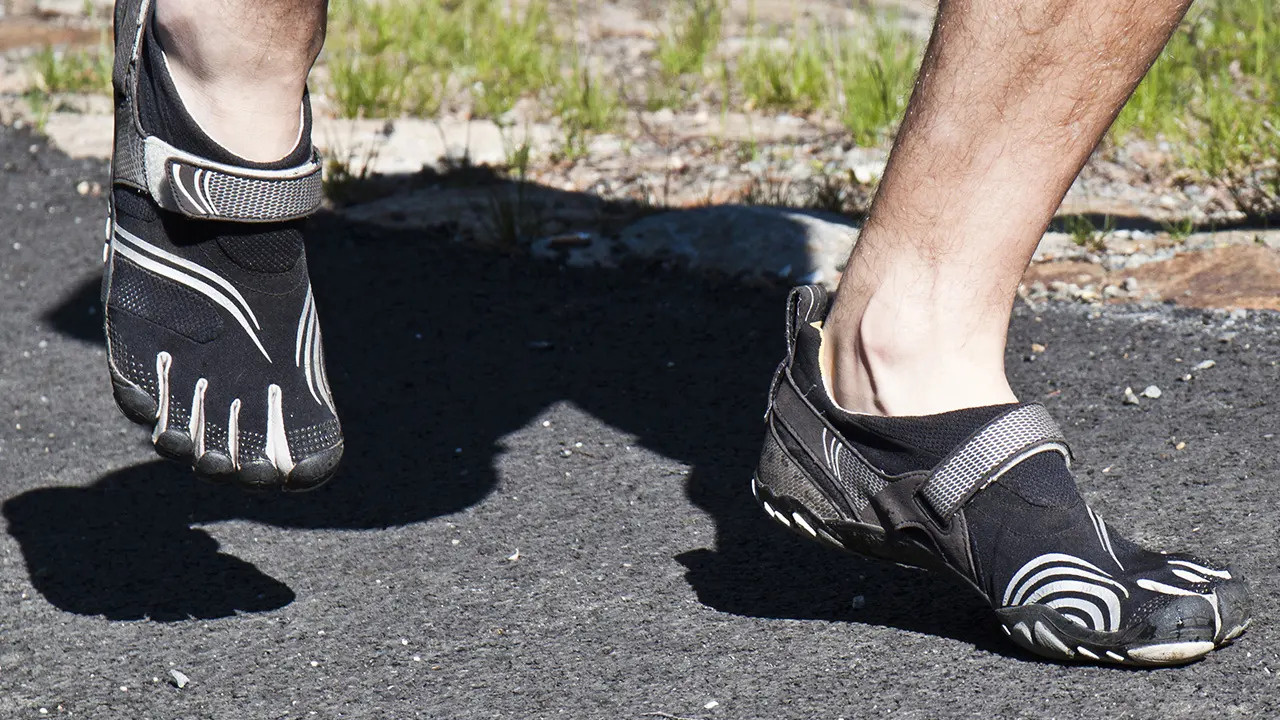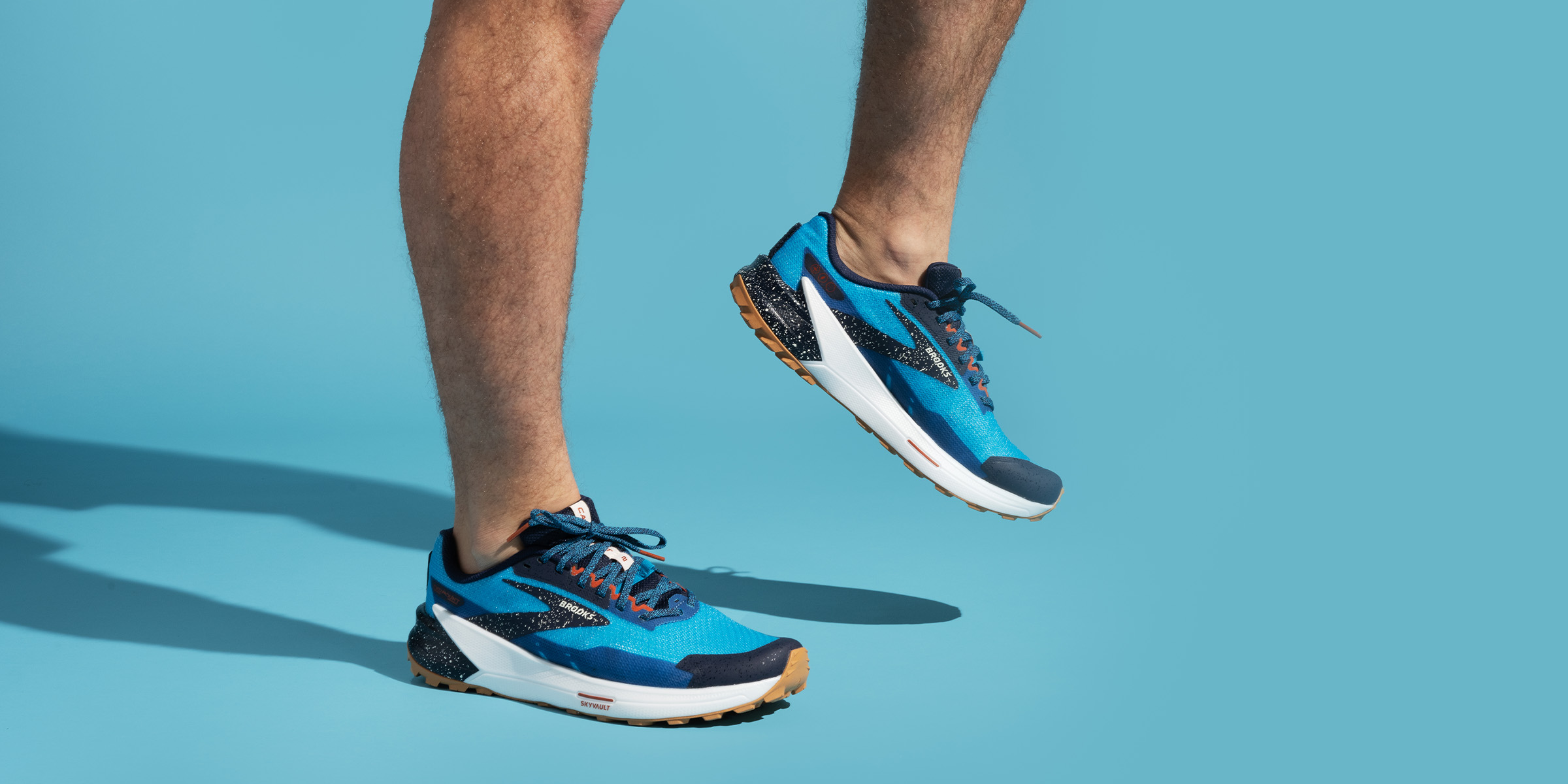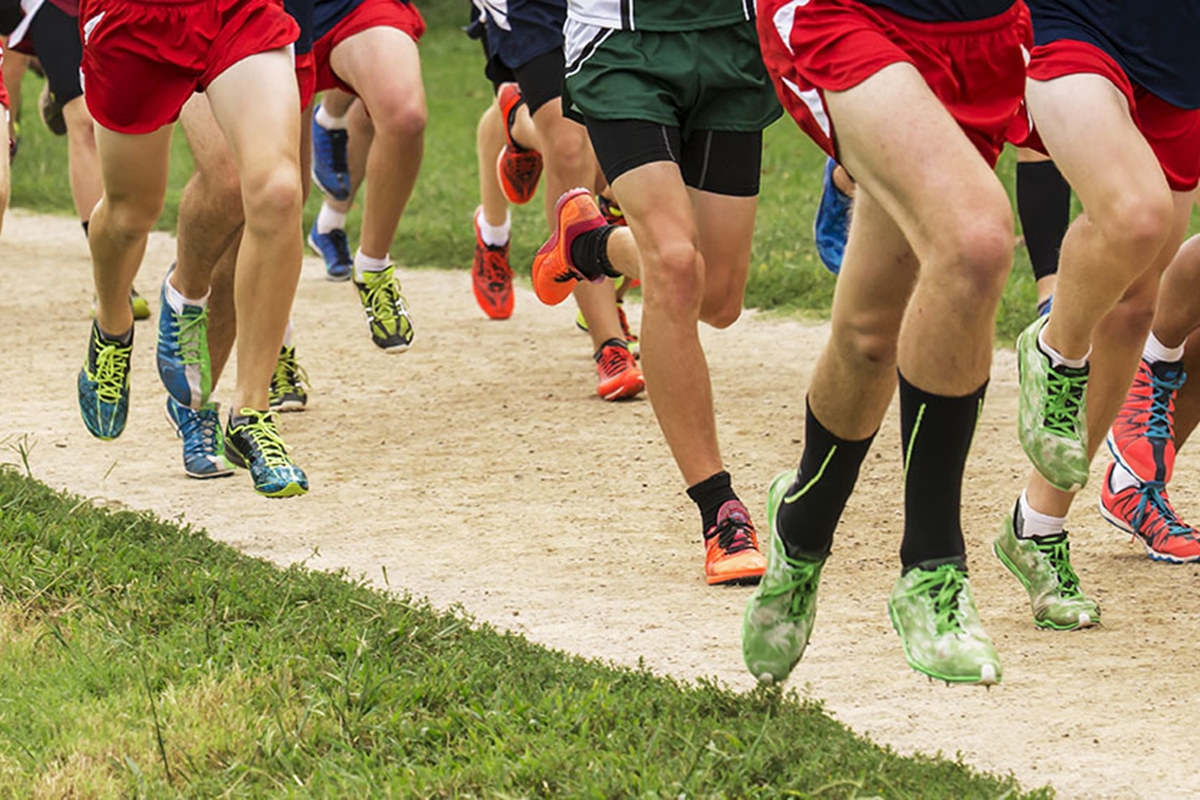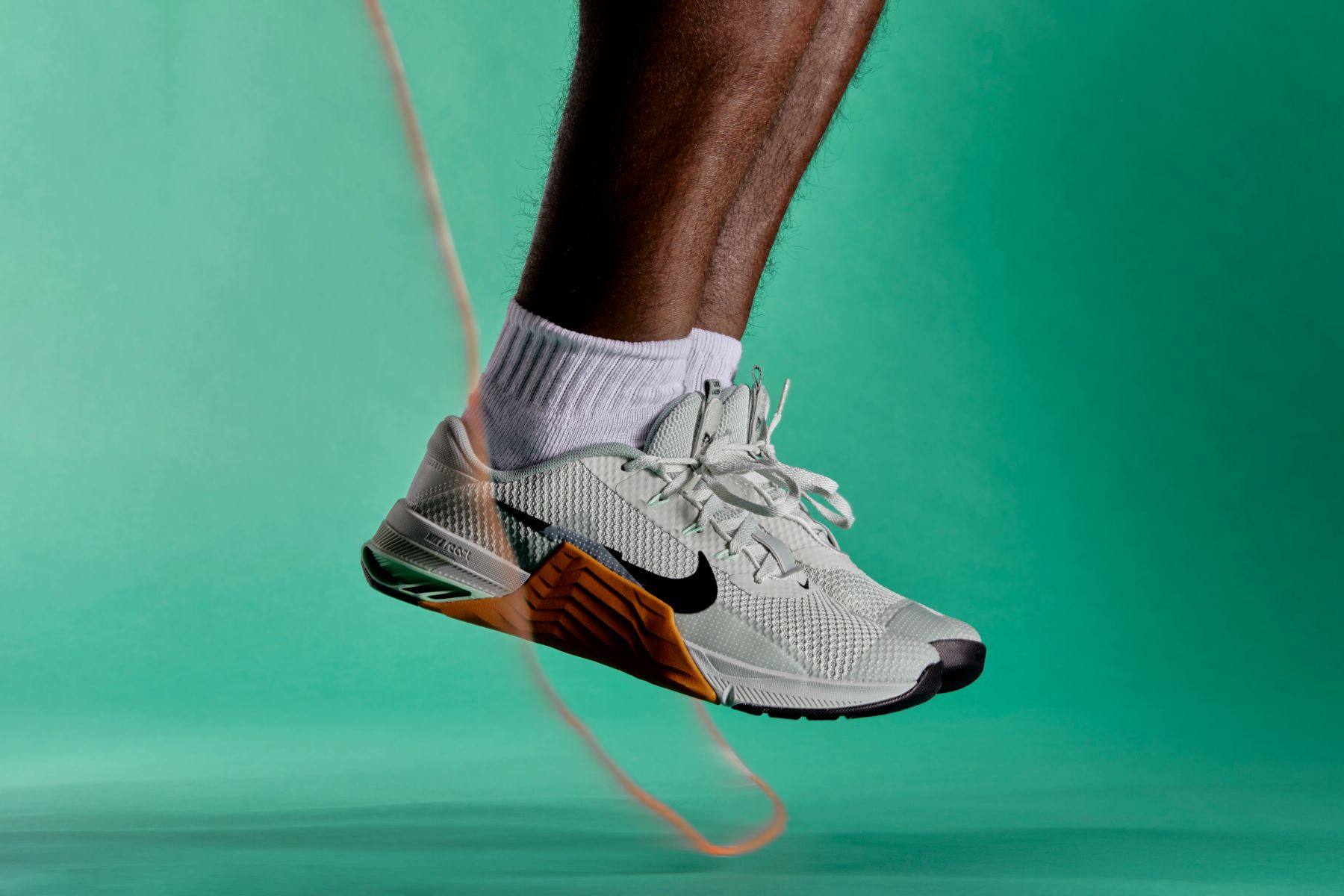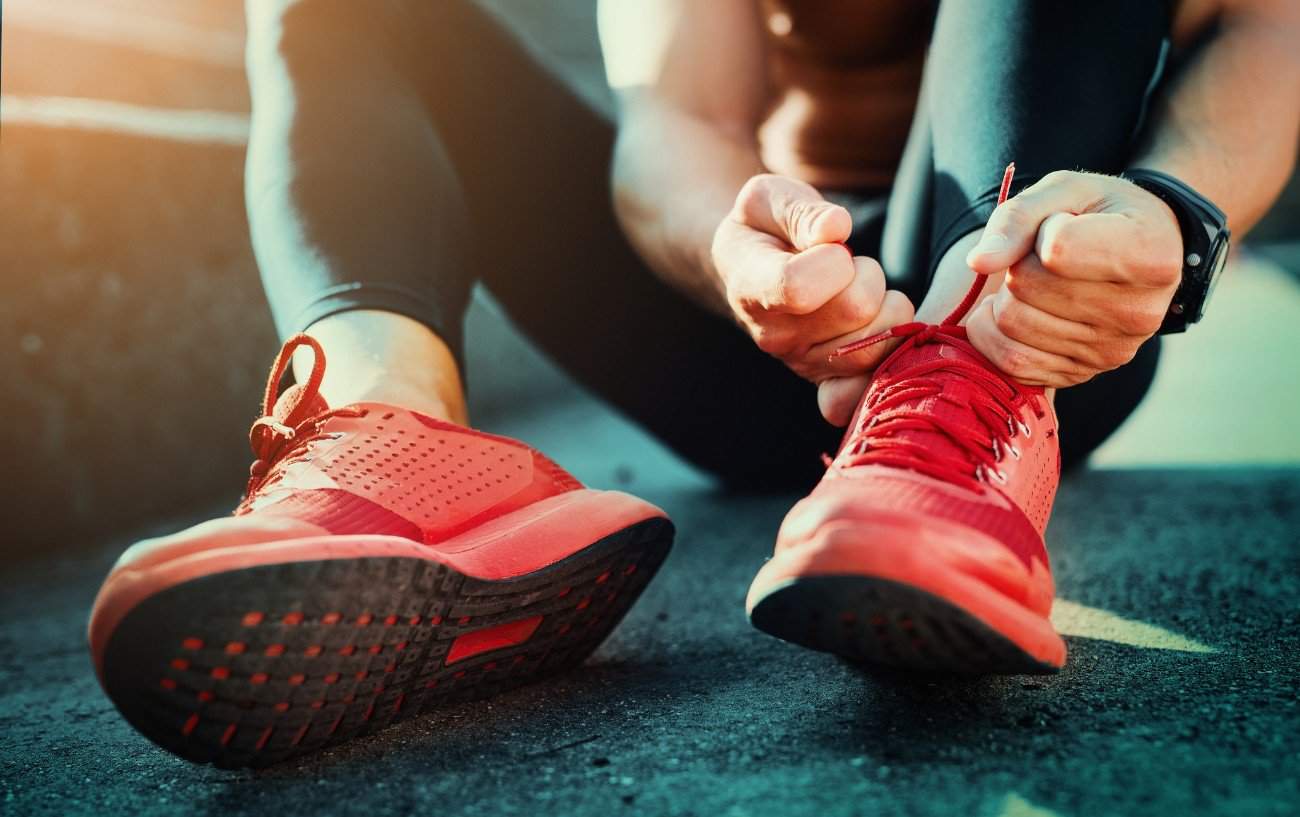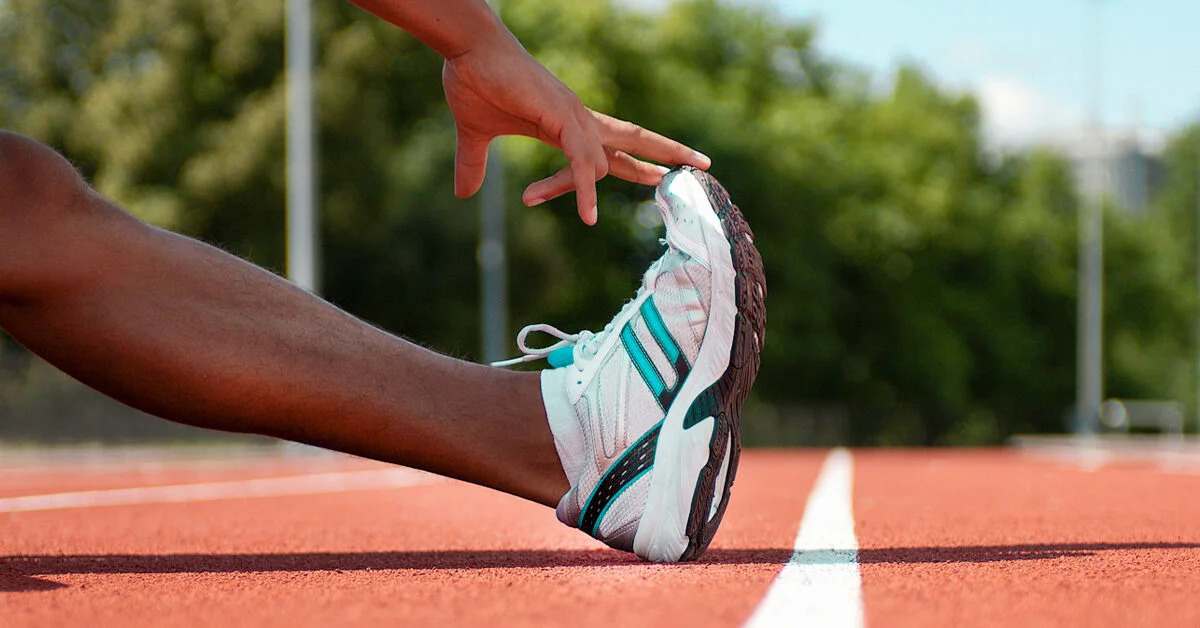Home>Misc>Featured>How To Switch To Minimalist Running Shoes
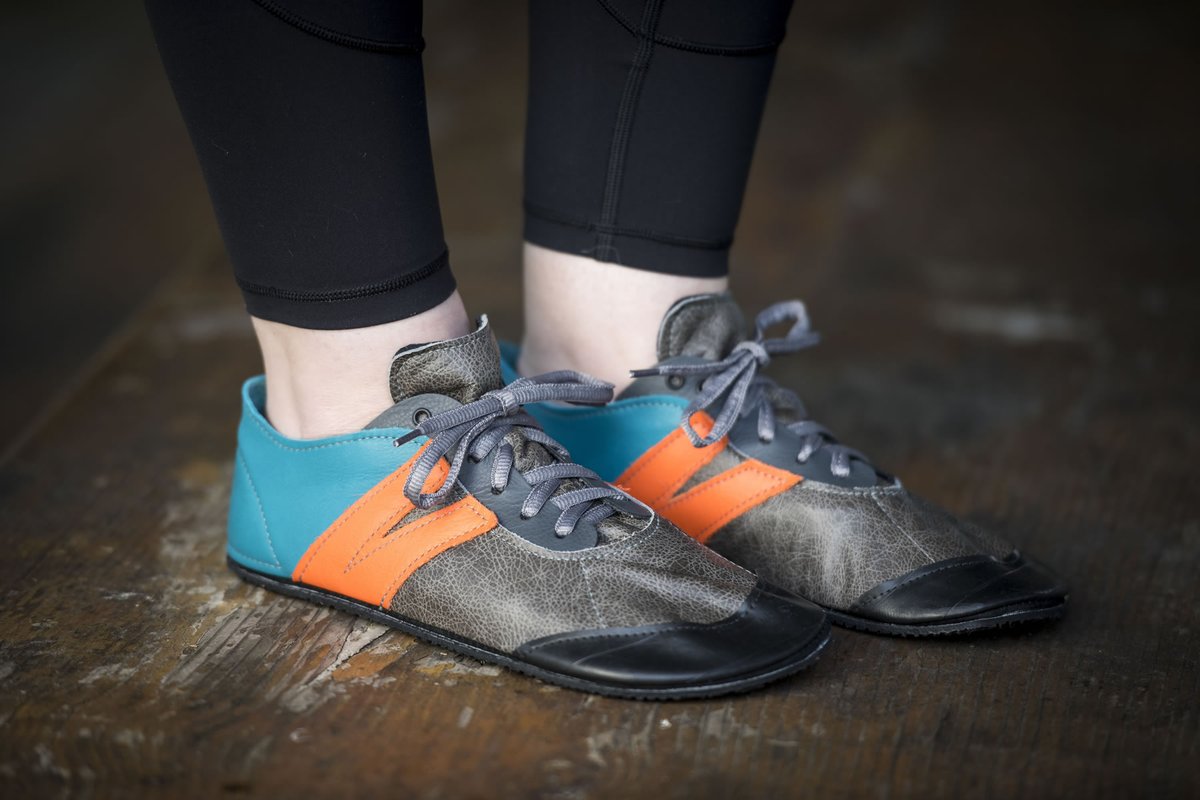

Featured
How To Switch To Minimalist Running Shoes
Modified: August 22, 2023
Looking to switch to minimalist running shoes? Discover the featured techniques and benefits of minimalist running to improve your form and performance.
Introduction
Welcome to the world of minimalist running shoes, where the philosophy is less is more. If you’re tired of bulky, cushioned shoes and are looking to improve your running experience, then minimalist running shoes might be just what you need. These lightweight, flexible shoes aim to promote a more natural running form and provide a closer connection to the ground.
But before you make the switch to minimalist running shoes, it’s crucial to understand what they are and how they differ from traditional running shoes. In this article, we will guide you through the transition process, help you choose the right minimalist shoes for your needs, and provide tips for proper running form and injury prevention.
Minimalist running shoes have gained popularity in recent years due to their potential benefits. By embracing minimalism, runners seek to strengthen their feet and leg muscles, improve their running efficiency, and reduce the risk of injuries caused by repetitive stress.
However, it’s important to note that transitioning to minimalist running shoes requires patience, as it involves making significant changes to your running technique and allowing your body time to adapt. Rushing into this transition can lead to injuries, so it’s crucial to take it slowly and listen to your body throughout the process.
In the following sections, we will explore the various aspects of minimalist running shoes, including choosing the right pair, learning proper form and technique, and preventing injuries. By the end of this article, you’ll be armed with the knowledge and confidence to make the switch to minimalist running shoes and enjoy the benefits they offer.
Understanding Minimalist Running Shoes
Before diving into the world of minimalist running shoes, it’s important to understand their design and purpose. Unlike traditional running shoes that are heavily cushioned and have high heels, minimalist running shoes are lightweight and have a low-profile design. They aim to mimic the feeling of running barefoot while providing some protection and support.
One of the key features of minimalist running shoes is their thin and flexible sole. This allows for greater proprioception, which is the body’s awareness of its position and movement in space. With minimalist shoes, you can feel the ground beneath you and make necessary adjustments to your running form accordingly.
Minimalist running shoes also encourage a more natural running gait. Traditional running shoes often have a higher heel-to-toe drop, which can promote a heel-striking running pattern. In contrast, minimalist shoes typically have a lower or zero-drop, meaning the heel and forefoot are at the same height. This encourages a midfoot or forefoot strike, promoting a more efficient and natural running stride.
By wearing minimalist running shoes, you can strengthen your feet and lower leg muscles. The reduced cushioning forces these muscles to work harder, leading to improved strength and stability. Over time, this can help decrease the risk of common running injuries such as plantar fasciitis and shin splints.
It’s important to note that transitioning to minimalist running shoes is a gradual process. The muscles and tendons in your feet and lower legs need time to adjust to the increased workload. Starting with short distances and gradually increasing your mileage will help prevent overuse injuries.
Another aspect to consider when understanding minimalist running shoes is the concept of ground feel. With traditional running shoes, the thick cushioning can dampen the sensation of the ground beneath you. Minimalist shoes, on the other hand, provide a greater sense of connection to the terrain, allowing you to more accurately navigate different surfaces and adjust your running form accordingly.
Overall, minimalist running shoes offer a more natural and sensory experience while running. They can help improve running efficiency, strengthen lower leg muscles, and reduce the risk of certain running-related injuries. However, it’s crucial to make a gradual transition to allow your body to adapt and avoid potential injuries. In the next section, we will explore the process of transitioning to minimalist running shoes.
Transitioning to Minimalist Running Shoes
Making the switch to minimalist running shoes is not something that should be done abruptly. It requires a gradual transition to allow your body to adapt to the new running style and build up the necessary strength and flexibility. Here are some steps to help you transition effectively:
- Evaluate your current running style: Before you start the transition, take some time to evaluate your current running gait. Are you a heel striker or a midfoot striker? Understanding your running style will help you make the necessary adjustments as you transition to minimalist shoes.
- Start with short distances: Begin by incorporating minimalist running shoes into your training regimen for shorter runs. This allows your feet and muscles to gradually adapt to the new footwear and running form. Start with just a few minutes and then gradually increase the duration over time.
- Listen to your body: Pay attention to any discomfort or pain during your runs. It’s normal to experience some muscle soreness as your body adjusts, but any sharp or persistent pain should not be ignored. If needed, take a break or revert back to your previous running shoes until you feel ready to continue the transition.
- Strengthen your feet and lower legs: Incorporate specific exercises to strengthen your feet and lower leg muscles. This can include barefoot exercises, calf raises, toe scrunches, and balance exercises. Building strength and stability will further support your transition to minimalist running shoes.
- Gradually increase mileage: As your body adapts to the minimalist running shoes, gradually increase the distance of your runs. Avoid the temptation to push too hard or too fast, as this can lead to overuse injuries. Slowly build up your mileage to prevent any setbacks or strains.
- Alternate between minimalist and traditional shoes: During the transition period, it can be beneficial to alternate between your minimalist running shoes and your traditional running shoes. This will allow your feet and muscles to continue adapting while providing some relief from the increased workload.
It’s important to note that the duration of the transition period will vary for each individual. Some may adapt quickly, while others may need more time. Listen to your body, be patient, and make adjustments as necessary. Transitioning to minimalist running shoes is a process that requires diligence and mindful progression.
Now that you have a better understanding of the transition process, let’s move on to the next section where we will discuss how to choose the right minimalist running shoes for your needs.
Choosing the Right Minimalist Running Shoes
When it comes to minimalist running shoes, finding the right pair for your specific needs is crucial. Here are some factors to consider when choosing the right minimalist running shoes:
- Level of Minimalism: Minimalist running shoes come in a range of styles, with varying levels of cushioning and support. Some shoes offer a barefoot-like feel, while others provide a bit more cushioning. Consider your comfort level and desired level of minimalism before making a choice.
- Fit and Size: Proper fit is essential to ensure comfort and prevent any foot-related issues. Take accurate measurements of your feet and match them with the shoe’s sizing chart. It’s also beneficial to try them on and walk or jog around the store to assess their fit and feel.
- Toe Box Width: Look for minimalist running shoes with a spacious toe box that allows your toes to splay naturally. This promotes better balance, stability, and comfort. Avoid shoes that squeeze or cramp your toes together, as this can lead to discomfort and potential issues.
- Flexibility: The flexibility of the sole is another important factor to consider. Minimalist shoes should allow your feet to move naturally and freely. Bend and twist the shoes to test their flexibility. Choose shoes that offer a good balance between flexibility and durability.
- Drop: Consider the heel-to-toe drop, which refers to the difference in height between the heel and the forefoot of the shoe. Traditional running shoes typically have a higher drop, while minimalist shoes generally have a lower or zero-drop. Choose a drop level that aligns with your running style and preferences.
- Quality and Durability: Ensure that the minimalist running shoes you choose are made of high-quality materials and are built to withstand the demands of running. Read reviews, check the brand’s reputation, and look for shoes with a solid track record of durability.
It’s worth noting that everyone’s foot shape and running style are different. What works for one person may not work for another. It’s advisable to try on different brands and models of minimalist running shoes to find the one that suits you best.
If you’re new to minimalist running shoes, consider consulting with a fitting specialist or running store staff who can provide expert guidance based on your specific needs and running goals.
Now that you have a better understanding of how to choose the right minimalist running shoes, let’s move on to the next section where we will explore proper form and technique for minimalist running.
Proper Form and Technique for Minimalist Running
Transitioning to minimalist running shoes goes hand in hand with adopting proper running form and technique. Here are some important aspects to keep in mind:
- Midfoot or Forefoot Strike: When running in minimalist shoes, it’s beneficial to aim for a midfoot or forefoot strike, as opposed to a heel strike. Striking with the midfoot or forefoot promotes a more efficient transfer of energy and reduces the impact on your joints. Focus on landing softly and rolling through from your midfoot to your forefoot.
- Posture and Alignment: Maintain an upright posture and keep your head aligned with your spine. Avoid leaning forward from the hips, as this can lead to overstriding and increased ground impact. Engage your core and imagine a string pulling you up from the top of your head.
- Cadence and Stride Length: Aim for a quick and light cadence, ideally around 180 steps per minute. This helps reduce the impact on your feet and lower legs while promoting a more efficient running form. Focus on maintaining a shorter stride length and increasing your turnover rate.
- Relaxed Arms and Shoulders: Keep your arms relaxed and bent at around 90 degrees. Avoid tensing up your shoulders or crossing your arms in front of your body. Allow your arms to naturally swing back and forth, assisting in your forward momentum.
- Foot and Ankle Strength: Minimalist running shoes encourage the activation of your foot and ankle muscles. Focus on strengthening these muscles through exercises such as calf raises, toe scrunches, and barefoot walking or running on soft surfaces like grass or sand.
- Gradual Transition: Don’t rush the process of adopting proper form and technique. Take your time to allow your body to adapt and strengthen. Start with shorter distances and gradually build up to longer runs, focusing on maintaining proper form throughout.
It’s important to note that transitioning to proper form and technique may take time and practice. Be patient with yourself and expect some adjustments and muscle soreness along the way. Consider working with a running coach or joining a running group to receive guidance and feedback on your form.
Video analysis can also be beneficial in identifying any areas for improvement in your running technique. By focusing on proper form and technique while running in minimalist shoes, you can enhance your running efficiency, reduce the risk of injuries, and fully experience the benefits of minimalist running.
Now that you have a better understanding of proper form and technique, let’s move on to the next section, where we will explore gradual progression and injury prevention.
Gradual Progression and Injury Prevention
When transitioning to minimalist running shoes, it’s crucial to take a gradual approach to prevent injuries and give your body time to adapt. Here are some tips for gradual progression and injury prevention:
- Start Slow: Begin with shorter distances and gradually increase your mileage. Don’t push yourself too hard or too fast. Gradually introduce minimalist running shoes into your training routine, allowing your feet and lower leg muscles to adjust to the new demands.
- Listen to Your Body: Pay attention to any signs of discomfort or pain during and after your runs. It’s normal to experience muscle soreness and fatigue, but sharp or persistent pain should not be ignored. If you experience any pain, take a break, assess your form, and consider seeking medical advice if necessary.
- Strengthen Supporting Muscles: Along with running, focus on strengthening the muscles that support your feet and lower legs. Incorporate exercises like calf raises, single-leg squats, and ankle stability drills into your training routine. These exercises will help build strength and stability, reducing the risk of injuries.
- Allow for Recovery: Rest days are crucial for your body to recover and adapt. Give yourself enough time between runs to rest and recharge. Overtraining can lead to overuse injuries and hinder your progress. Listen to your body and adjust your training schedule accordingly.
- Diversify Your Running Surfaces: Vary your running surfaces to challenge your feet and lower leg muscles. Transitioning to minimalist shoes may require you to run on different surfaces like grass, trails, or softer tracks. This helps strengthen the muscles and tendons in your feet and lower legs, reducing the risk of overuse injuries.
- Stay Consistent: Gradual progression and injury prevention require consistency. Stick to your training plan, gradually increasing your mileage and maintaining proper form. Consistency builds strength, endurance, and resilience, helping you adapt to minimalist running shoes effectively.
Remember, each individual may progress at a different pace, so listen to your body and adjust your training accordingly. It’s better to progress slowly and avoid injuries than to rush and deal with setbacks.
In the event of any persistent or severe pain, it’s important to consult with a healthcare professional who can provide a proper diagnosis and guidance. They can assess your running form, identify any areas of weakness or imbalance, and recommend specific exercises or treatments to aid your transition.
By taking a gradual approach, focusing on proper progression, and incorporating injury prevention strategies, you can successfully transition to minimalist running shoes and enjoy the benefits they offer.
Now that you have learned about gradual progression and injury prevention, let’s move on to the final section, where we will discuss common mistakes to avoid when transitioning to minimalist running shoes.
Common Mistakes to Avoid
Transitioning to minimalist running shoes can be a transformative and rewarding experience, but it’s important to avoid common mistakes that can hinder your progress and potentially lead to injuries. Here are some common mistakes to avoid:
- Rushing the Transition: One of the biggest mistakes is rushing the transition to minimalist running shoes. Your body needs time to adapt to the new running style and the increased workload on your feet and lower leg muscles. Start with short distances and gradually increase your mileage, allowing your body to adjust gradually.
- Ignoring Proper Form: Neglecting proper running form and technique can lead to inefficiency and put unnecessary stress on your body. Focus on landing with a midfoot or forefoot strike, maintaining an upright posture, and optimizing your stride length and cadence. Seek guidance from a running coach if needed.
- Sudden Increase in Mileage: It’s essential to increase your mileage gradually to avoid overuse injuries. Sudden and significant increases in mileage can strain your muscles and tendons, leading to issues such as shin splints or Achilles tendonitis. Stick to the recommended 10% rule of increasing mileage each week.
- Not Strengthening Supporting Muscles: Transitioning to minimalist running shoes requires strong feet and lower leg muscles. Failing to incorporate strength exercises can lead to muscle imbalances and increase the risk of injury. Include exercises that target your calf muscles, intrinsic foot muscles, and ankle stabilizers.
- Continuing with Worn-out Shoes: Running in worn-out shoes, whether minimalist or traditional, can increase the risk of injuries. Check the condition of your shoes regularly and replace them when necessary. Worn-out soles and decreased cushioning provide less support and can lead to overuse injuries.
- Overlooking Rest and Recovery: Rest and recovery are integral parts of any training program. Failing to give your body enough time to rest can lead to overtraining, fatigue, and even injuries. Incorporate rest days into your schedule and listen to your body when it signals the need for extra recovery time.
- Ignoring Pain or Discomfort: Pain or discomfort during or after running should not be ignored. It’s important to differentiate between normal muscle soreness and pain that may indicate an injury. If you experience persistent or sharp pain, it’s advisable to consult with a healthcare professional for an accurate diagnosis and appropriate treatment.
By being mindful of these common mistakes, you can navigate your transition to minimalist running shoes more effectively and reduce the risk of injuries. Remember, patience, consistency, and a focus on proper technique are key to a successful and enjoyable experience with minimalist running shoes.
In the final section, we will recap the key points discussed and conclude the article with some closing thoughts.
Conclusion
Transitioning to minimalist running shoes can be a rewarding journey that enhances your running experience and promotes a more natural and efficient running form. By understanding the principles behind minimalist shoes, gradually transitioning to them, focusing on proper form and technique, and taking steps to prevent injuries, you can fully reap the benefits they offer.
Remember, the transition process should be approached patiently and gradually. Start with shorter distances, listen to your body, and allow for adequate rest and recovery. Strengthening the supporting muscles and paying attention to proper form will contribute to a successful transition.
When choosing minimalist running shoes, consider factors such as level of minimalism, fit and size, toe box width, flexibility, drop, and durability. Every individual is unique, so find the shoes that best suit your needs and preferences.
Avoid common mistakes such as rushing the transition, neglecting proper form, sudden increases in mileage, ignoring strength exercises, running in worn-out shoes, and not giving your body time to rest and recover. By being mindful of these mistakes, you can reduce the risk of injuries and make your transition smoother.
Overall, transitioning to minimalist running shoes can offer a greater connection to the ground, improved running efficiency, and strengthened feet and lower leg muscles. With patience, consistency, and a focus on proper technique, you can enjoy the benefits of minimalist running and elevate your running performance.
Remember, every runner is unique, and what works for one person may not work for another. Listen to your body, seek professional guidance if needed, and make adjustments along the way. Embrace the minimalist philosophy and enjoy the freedom and natural movement that minimalist running shoes can provide.
